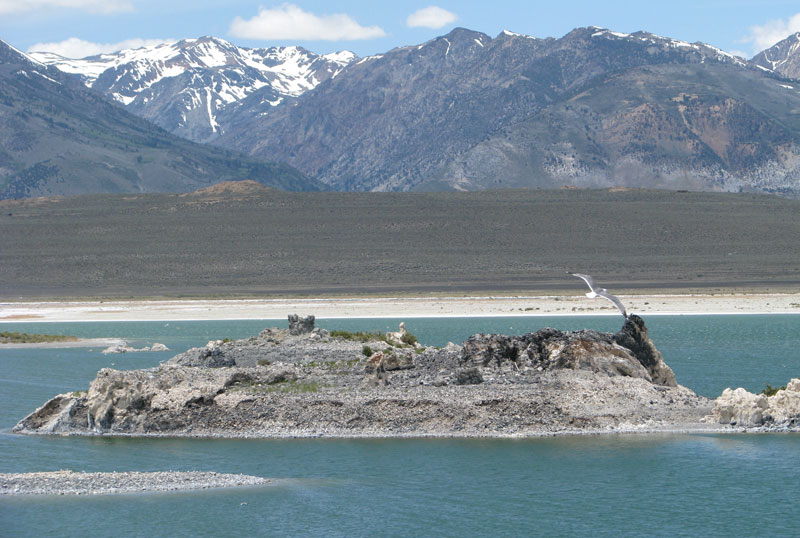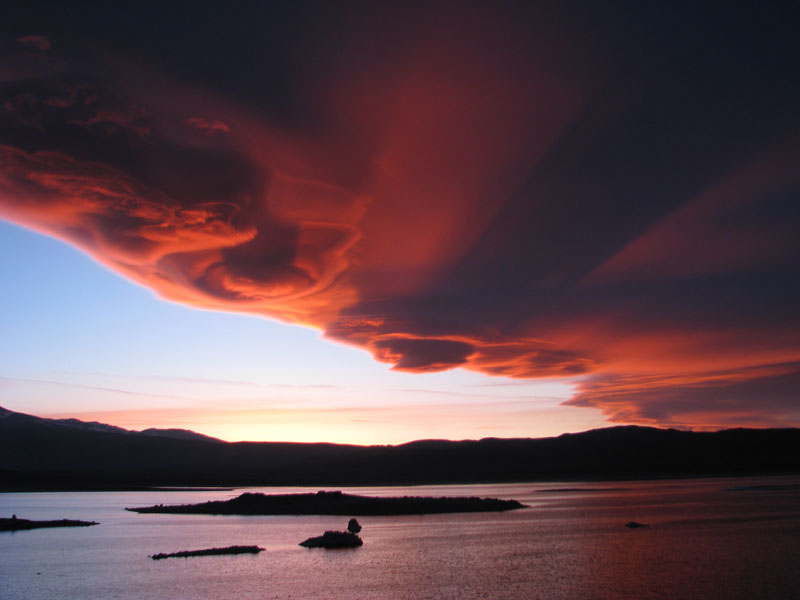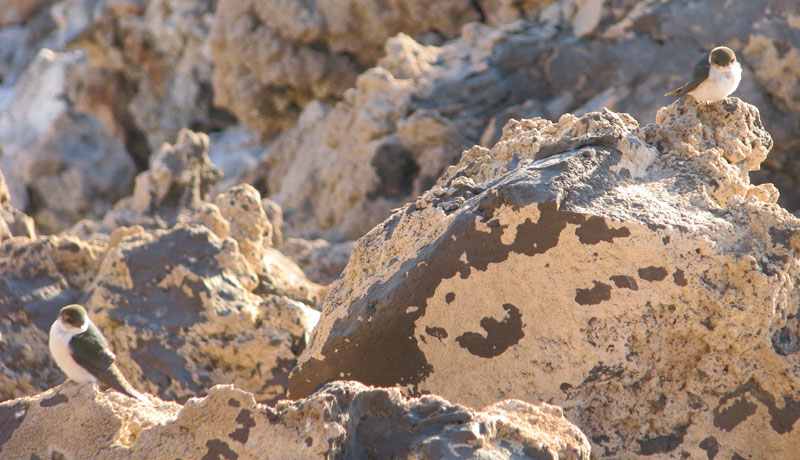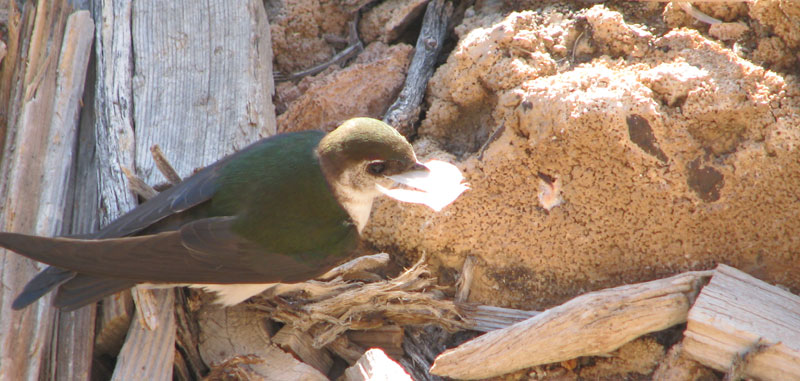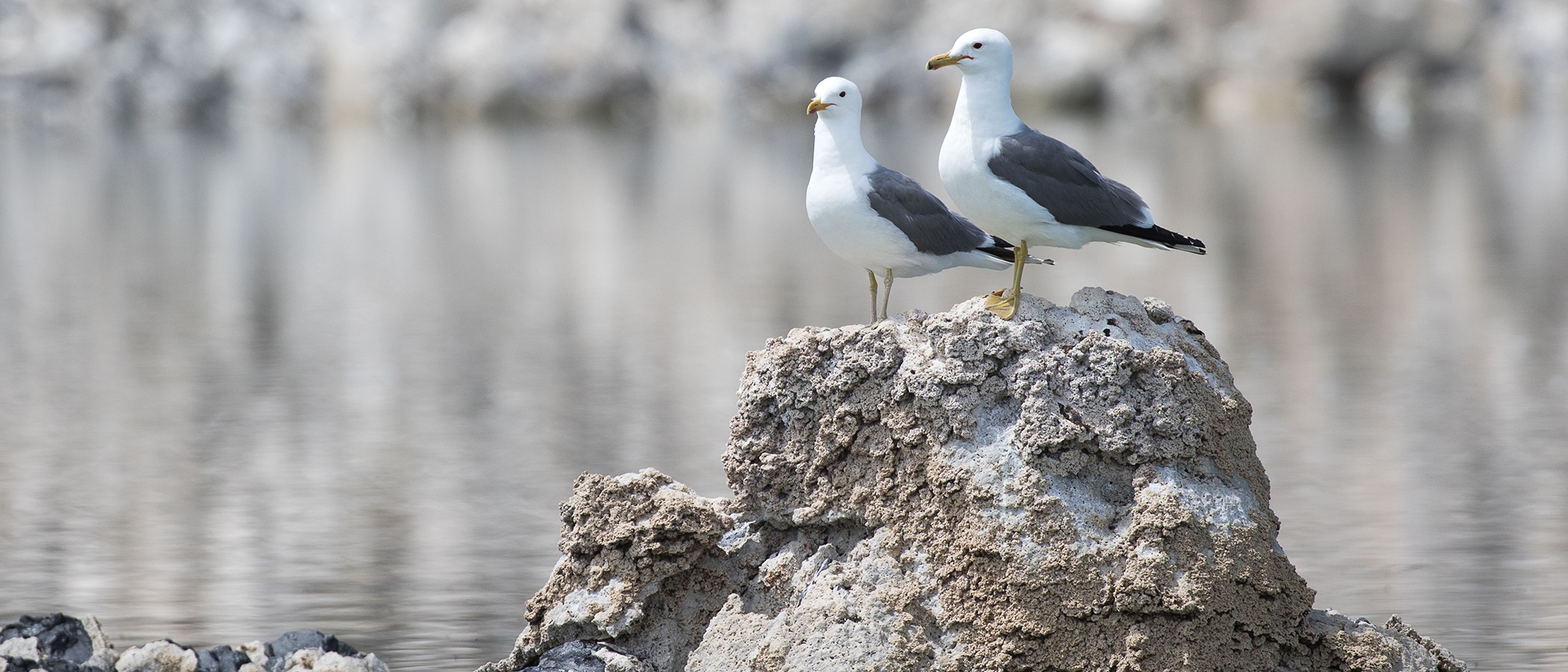
This post was written by Lynette Villagomez, 2013 Project Specialist.
The first time I saw Mono Lake I made a promise to myself that I’d visit the lake’s islands before I left the Mono Basin. Nearly one year later, I was offered an opportunity to do just that for the annual California Gull nest count.
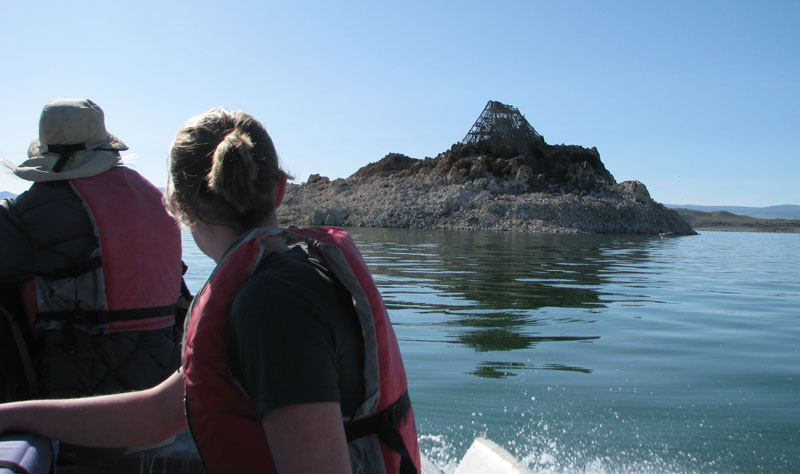
The California Gull nest count, which began in 1983, is an ongoing project that aims to determine the effect of the changing lake level on ecology and reproductive success of California Gulls in response to water diversions of Mono Lake’s tributary streams by the Los Angeles Department of Water & Power
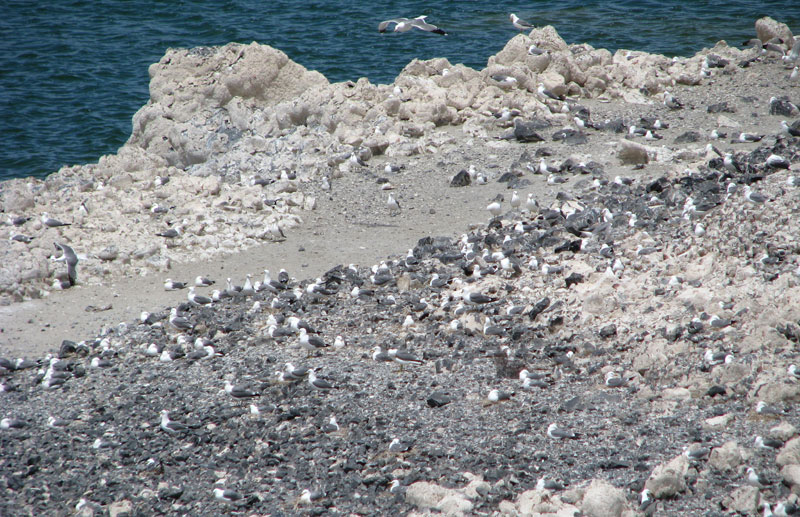
The process of counting gull nests is intense, but the rewards are worth the challenge—picturesque views of Mono Lake and the Mono Basin, and camping overnight on the platform of a volcano that was constructed for a movie filmed in the 1950’s. The sights were surreal—my first evening in camp we saw an amazing sunset that lit up a large Sierra wave cloud formation, making the clouds appear as if they were on fire. The highlight of the trip was enticing Violet-green Swallows to come close to our camp by throwing feathers into the air. The swallow would swiftly catch a feather in midair, forage on the ground for fallen feathers, or chase a fellow swallow for a feather it had caught. In addition to seeing California Gulls, we observed several species of birds on and around the Mono Lake islets: Black-crowned Night Heron, Eared Grebe, Golden Eagle, Osprey, Peregrine Falcon, and phalaropes.
Between 45,000 and 55,000 gulls depend on Mono Lake for both nesting purposes and also as a food source; Mono Lake supports the second-largest population of nesting California Gulls. It was always difficult for me to picture or imagine exactly how many gulls are at Mono Lake. Going out to count gull nests ultimately provided me with a better overall picture of how many gulls depend upon Mono Lake and its islands, and why the lake is so important to hundreds of species of birds.
The longer you’re in the Mono Basin the longer your list of things to do becomes—I’m sure I’ll return to cross additional activities off of my list; I’ll never forget this experience and my year spent in the Mono Basin.
Top photo courtesy of Point Blue Conservation Science.

